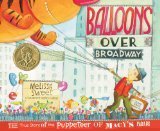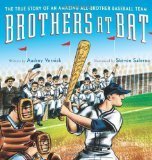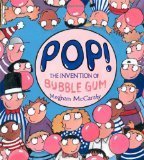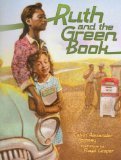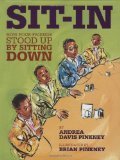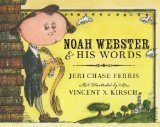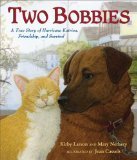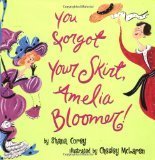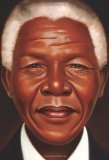Dawn Little's Blog, page 7
August 26, 2013
Jo MacDonald Hiked in the Woods by Mary Quattlebaum
Publisher: Dawn Publications
Publication Date: September 1, 2013
Recommended Grades: 3-5
The song “Old MacDonald Had a Farm” has taught generations of children about farm animals. Now the farmer’s granddaughter, Jo MacDonald, uses the traditional tune to introduce a forest community.
Lesson Idea:
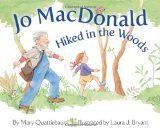

Writer’s Workshop: Read aloud the nursery rhyme, “Old MacDonald Had a Farm” and then share Jo Macdonald Hiked in the Woods . Brainstorm a list of nursery rhymes with students. Ask students to re-write a nursery rhyme using different content. Use Jo Macdonald Hiked in the Woods
. Brainstorm a list of nursery rhymes with students. Ask students to re-write a nursery rhyme using different content. Use Jo Macdonald Hiked in the Woods as a mentor text.
as a mentor text.
Disclosure: I received a copy of this book from the publisher for review.
©2013 by Dawn Little for Picture This! Teaching with Picture Books. All Amazon links are affiliate links and may result in my receiving a small commission. This is at no additional cost to you.
Filed under: Jo MacDonald Hiked in the Woods, mentor texts, writers workshop Tagged: Jo MacDonald Hiked in the Woods, mentor texts, writers workshop

August 19, 2013
Now Open the Box by Dorothy Kunhardt
Publisher: The New York Review Children’s Collection
Publication Date: August 20, 2013
A circus man stands in front of his circus tent holding a very small box. What could be in that little, tiny box? When the circus man opens the box, all the people see for themselves a teeny, tiny, dog, named Peewee.
Read Aloud Recommended Grades: K-2
Lesson Recommended Grades: 3-5
Note: This book was originally published in 1934, a re-released classic by the author of Pat the Bunny.
Lesson Idea: 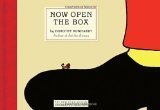
 Sentence Fluency/Dialogue: Read aloud Now Open the Box
Sentence Fluency/Dialogue: Read aloud Now Open the Box and discuss the author’s technique. What do students notice when you show them the text? She used run on sentences to build suspense and grab the reader’s attention. She also left out traditional punctuation when characters spoke. After reading aloud, provide copies of several pages of the text for students. Ask them to indicate places where they could add punctuation for dialogue.
and discuss the author’s technique. What do students notice when you show them the text? She used run on sentences to build suspense and grab the reader’s attention. She also left out traditional punctuation when characters spoke. After reading aloud, provide copies of several pages of the text for students. Ask them to indicate places where they could add punctuation for dialogue.
Disclosure: I received a copy of this book for review from the publisher.
©2013 by Dawn Little for Picture This! Teaching with Picture Books. All Amazon links are affiliate links and may result in my receiving a small commission. This is at no additional cost to you.
Filed under: dialogue, Now Open the Box by Dorothy Kunhardt, sentence fluency, six traits of writing, teaching with picture books Tagged: dialogue, Now Open the Box by Dorothy Kunhardt, sentence fluency, six traits of writing

August 12, 2013
Noisy Frog Sing-Along by John Himmelman
Publisher: Dawn Publications
Publication Date: September 1, 2013
Recommended Grades: K-2
When frogs get together, they love to sing! They fill their big, bulgy throat pouch with air and sing out loud. Some peep, some trill, some growl, some creek, and some go WAAH, WAAH, WAAH! It’s a chorus that happens near almost every pond and stream.
Lesson Idea:
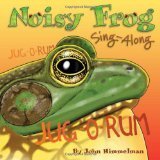

Six Traits: Word Choice Read aloud Noisy Frog Sing-Along . Use this book as a mentor text for word choice. How does the author use onomatopoeia and different font sizes to draw the reader in? Students could create their own book about different animals and the sounds they make, using this book as a model. At the end of the book, the author shares information about each type of frog he wrote about.
. Use this book as a mentor text for word choice. How does the author use onomatopoeia and different font sizes to draw the reader in? Students could create their own book about different animals and the sounds they make, using this book as a model. At the end of the book, the author shares information about each type of frog he wrote about.
Disclosure: I received a copy of this book from the publisher for review.
©2013 by Dawn Little for Picture This! Teaching with Picture Books. All Amazon links are affiliate links and may result in my receiving a small commission. This is at no additional cost to you.
Filed under: Noisy Frog Sing-Along by John Himmelman, six traits of writing, teaching with picture books, word choice Tagged: Noisy Frog-Sing Along, onomatopoeia, six traits of writing, word choice

August 10, 2013
August 10 for 10: A Picture Book Event
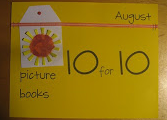 Cathy at Reflect and Refine and Mandy at Enjoy and Embrace Learning began this special event in 2010, after having a discussion stemming from this question: If you were stranded on an island and had to teach, what 10 picture books would you hope to have in your bag?
Cathy at Reflect and Refine and Mandy at Enjoy and Embrace Learning began this special event in 2010, after having a discussion stemming from this question: If you were stranded on an island and had to teach, what 10 picture books would you hope to have in your bag?
I participated in Picture Book 10 for 10 in 2010 and 2012. In my previous lists I chose a variety of picture books that I would want to have in my bag (with many on my 2010 list remaining constant). This year, I decided to only place nonfiction picture books on my list. Of course, then I took a look at Mandy’s and Cathy’s blogs and realized that somehow, I missed the Nonfiction 10 for 10 that they began in February of this year. How that happened, I’m not sure. However, I’ll go ahead with my list of nonfiction here and maybe I’ll join in with another ten for Nonfiction 10 for 10 in 2014!
Here is a list of the 10 nonfiction pictures books I would hope to have in my bag (in no particular order):
Balloons Over Broadway: The True Story of the Puppeteer of the Macy’s Parade by Melissa Sweet
A picture book based on the life of Tony Sarg, the man behind the Macy’s Thanksgiving Day parade.
Lesson Idea: This is a great mentor text for biographies and narrative nonfiction.
Brothers at Bat: The True Story of an Amazing All-Brother Baseball Team by Audrey Vernick
According to the National Baseball Hall of Fame, from the 1860′s until the 1940′s, there were twenty-nine baseball teams made up entirely of brothers. The Acerras played longer than any other. This is their story.
Lesson Idea: Another great mentor text for biographies and narrative nonfiction.
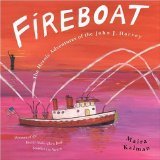

Fireboat: The Heroic Adventures of the John J. Harvey by Maira Kalman

The John J. Harvey fireboat was the largest, fastest, shiniest fireboat of its time, but by 1995, the city didn’t need old fireboats anymore. So the Harvey retired, until a group of friends decided to save it from the scrap heap. Then, one sunny September day in 2001, something so horrible happened that the whole world shook. And a call came from the fire department, asking if the Harvey could battle the roaring flames.
Why I Chose it: I love the story of John J. Harvey and how he was taken out of retirement during our country’s most horrific attack.
Pop! The Invention of Bubble Gum by Meghan McCarthy
Pop!: The Invention of Bubble Gum follows Walter Diemer’s attempts and eventual success of the invention of Dubble Bubble bubble gum. The pictures are bright and colorful and full of gumballs. The back of the book has a nice layout of further information about Walter Diemer and the history of gum.
Lesson Idea: This is a great mentor text to use as a model for nonfiction organization. Students could replicate McCarthy’s style using another topic or to write a biography.
Ruth and the Green Book by Calvin Alexander Ramsey
In the 1950′s Ruth and her family took a road trip from Chicago to Alabama to visit her grandmother. Along the way, they met with resistance from business owners who did not want to serve African Americans. When Ruth learns about The Negro Motorist Green Book, a book created to inform African Americans of African-American friendly establishments, her family uses it to meet new friends on their way.
Lesson Idea: This is a great book to tie primary sources into. You can still find examples of parts of the Green Book online.
Sit In: How Four Friends Stood Up by Sitting Down by Andrea Pinkney
It was February 1, 1960. They didn’t need menus. Their order was simple. A doughnut and coffee, with cream on the side. The story of the sit-in at Woolworth’s during the WHITES ONLY edict of the era is poignantly told through this picture book.
Lesson Idea: Use this as a model for students to write their own historically based picture book, based on an event they study.
Noah Webster and His Words by Jeri Chase Ferris
From the beginning, Noah Webster knew he didn’t want to be a farmer like the rest of his family. He wanted to be a SCHOLAR. This is the story of how he made his dream come true.
Lesson Idea: Another great biography mentor text, but also a great mentor when teaching word choice.
Two Bobbies: A True Story of Hurricane Katrina, Friendship, and Survival by Kirby Larson
Two Bobbies: A True Story of Hurricane Katrina, Friendship, and Survival is the true story of Hurricane Katrina, friendship, and survival. . . of a dog and cat. Bobbi and Bob Cat are left behind when the hurricane hits. Never leaving each other’s sides, they overcome many obstacles, living on the streets of New Orleans for four months before being rescued. With a surprise twist, this is a true tale of the power of friendship.
Lesson Idea: This is a great book to use at the beginning of the year to begin building a community in the classroom.
Side note: I read this book a while ago. Until I went back and chose this book and looked at the author again, I didn’t realize that it was Kirby Larson! As in, Kirby Larson, author of Hattie Big Sky and Hattie Ever After
and Hattie Ever After !
!
You Forgot Your Skirt, Amelia Bloomer by Shana Corey
by Shana Corey
A true story about the 19th-century women’s rights activist Amelia Bloomer. A note at the end provides horrifying and fascinating information about women’s restrictive clothing (corsets sometimes displaced internal organs!) and the dress reform that Amelia Bloomer spearheaded.
Why I Chose it: There are so many wonderful new picture book biographies out now, and this is one of them. Another great example of narrative nonfiction.
Nelson Mandela by Kadir Nelson
Beautifully painted. Inspirational. This is the story of Nelson Mandela, a global icon. In Nelson’s typical poetic verse and gorgeous paintings, he shares the story of a young Mandela’s determination to change South Africa.
Lesson Idea: A mentor text for civil rights and another fantastic biography. This book is a beautiful rendition of Mandela’s younger life. I’m in awe of Kadir Nelson’s talent!
©2013 by Dawn Little for Picture This! Teaching with Picture Books. All Amazon links are affiliate links and may result in my receiving a small commission. This is at no additional cost to you.
Filed under: August 10 for 10: A Picture Book Event, teaching with picture books Tagged: August 10 for 10: A Picture Book Event

August 5, 2013
Crankee Doodle by Tom Angleberger
Recommended Grades: 3-5
Find out why Yankee was so cranky in this hilarious take on the traditional song.
Lesson Idea:
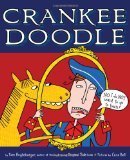

Six Traits: Organization, Writer’s Workshop: Dialogue: Read aloud Crankee Doodle  (makes a fun read aloud!). Use this book as a mentor text for organization – fun surprise ending or a mentor text for dialogue. How does the author show dialogue in this book? Group Crankee Doodle
(makes a fun read aloud!). Use this book as a mentor text for organization – fun surprise ending or a mentor text for dialogue. How does the author show dialogue in this book? Group Crankee Doodle with other books with different examples of dialogue, such as, I Want My Hat Back by Jon Klassen, Big Plans by Bob Shea, One Cool Friend by Toni Buzzeo, and Cat Secrets by Jef Czekaj to share how different authors display dialogue in ways other than with traditional quotation marks.
with other books with different examples of dialogue, such as, I Want My Hat Back by Jon Klassen, Big Plans by Bob Shea, One Cool Friend by Toni Buzzeo, and Cat Secrets by Jef Czekaj to share how different authors display dialogue in ways other than with traditional quotation marks.
©2013 by Dawn Little for Picture This! Teaching with Picture Books. All Amazon links are affiliate links and may result in my receiving a small commission. This is at no additional cost to you.
Filed under: Crankee Doodle by Tom Angleberger, dialogue, organization, six traits of writing, teaching with picture books, writers workshop Tagged: Crankee Doodle by Tom Angleberger, dialogue, organization, six traits of writing, writers workshop

July 29, 2013
Flora and the Flamingo by Molly Idle
Recommended Grades: 3-5
A tentative partnership blooms into an unlikely friendship between a girl and a flamingo in this wordless picture book.
Lesson Idea:
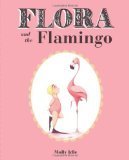

Close Reading/Making Inferences: Share Flora and the Flamingo with students. Provide students with sections of the story to “read.” What do they notice? Ask them to make inferences about the section they have. Ask students how words and pictures work together to help us understand what we read. Would words help them understand what is going on in the pictures? How? What emotions do the characters show? How do you know?
with students. Provide students with sections of the story to “read.” What do they notice? Ask them to make inferences about the section they have. Ask students how words and pictures work together to help us understand what we read. Would words help them understand what is going on in the pictures? How? What emotions do the characters show? How do you know?
©2013 by Dawn Little for Picture This! Teaching with Picture Books. All Amazon links are affiliate links and may result in my receiving a small commission. This is at no additional cost to you.
Filed under: Close Reading, Flora and the Flamingo by Molly Idle, making inferences, teaching with picture books, wordless picture books Tagged: close reading, Flora and the Flamingo, making inferences, wordless picture books

July 22, 2013
One Tiny Turtle by Nicola Davies
Recommended Grades: 2-4
The story of “one tiny turtle” and her life cycle in the ocean. The author uses a technique to tell a narrative story, but shares information in a non-traditional way.

A Loggerhead turtle at the North Carolina Aquarium, Kure Beach, NC
Lesson Idea:
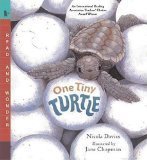

Nonfiction Features/Sensory Details: Read aloud One Tiny Turtle and ask students what they notice about the features the author uses. Discuss the differences between the two text types. How does the author’s technique help us to understand the life cycle of Loggerhead turtles? This would also serve as a great mentor text for sensory details in writing. How does the author use sensory details to enhance the story? Could you borrow this technique from the author?
and ask students what they notice about the features the author uses. Discuss the differences between the two text types. How does the author’s technique help us to understand the life cycle of Loggerhead turtles? This would also serve as a great mentor text for sensory details in writing. How does the author use sensory details to enhance the story? Could you borrow this technique from the author?
©2013 by Dawn Little for Picture This!
Teaching with Picture Books. All Amazon links are affiliate links and may result in my receiving a small commission. This is at no additional cost to you.
Filed under: nonfiction, nonfiction writing, One Tiny Turtle, sensory details, six traits of writing, teaching with picture books, word choice Tagged: nonfiction features, nonfiction writing, One TIny Turtle, sensory details, six traits of writing, word choice

July 15, 2013
The Day the Crayons Quit by Drew Daywalt
Recommended Grades: 3-5
Duncan just wants to color, but when he opens his box of crayons, he finds only letters all saying the same thing: We quit!
Lesson Idea:
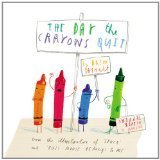

Mentor Text: Letter Writing/Voice: Read aloud The Day the Crayons Quit and discuss the voice of each crayon. What do you learn about the individual crayons from each letter? How do they feel and behave? Create a chart noting the character traits for each color. Have students write a piece from a specific color’s point of view – using the character traits of the colors to guide them. The book is written in letter form, so this is also a good model for letter writing.
and discuss the voice of each crayon. What do you learn about the individual crayons from each letter? How do they feel and behave? Create a chart noting the character traits for each color. Have students write a piece from a specific color’s point of view – using the character traits of the colors to guide them. The book is written in letter form, so this is also a good model for letter writing.
©2013 by Dawn Little for Picture This! Teaching with Picture Books. All Amazon links are affiliate links and may result in my receiving a small commission. This is at no additional cost to you.
Filed under: organization, six traits of writing, teaching with picture books, The Day the Crayons Quit, voice, writers workshop Tagged: letter writing, organization, six traits of writing, The Day the Crayons Quit, voice

July 8, 2013
Bluebird by Bob Staake
Recommended Grades: 3-5
A lonely boy meets a special friend in this wordless picture book. A beautiful story of how the friendship is tested.
The Common Core State Standards have placed a lot of emphasis on close reading. Here is a way to teach students how to “read closely” using pictures as a scaffold.
Lesson Idea:
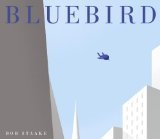

Close Reading/Making Inferences: Share Bluebird with students. Provide students with sections of the story to “read.” What do they notice? Ask them to make inferences about the section they have. Ask students how words and pictures work together to help us understand what we read. Would words help them understand what is going on in the pictures? How?
with students. Provide students with sections of the story to “read.” What do they notice? Ask them to make inferences about the section they have. Ask students how words and pictures work together to help us understand what we read. Would words help them understand what is going on in the pictures? How?
©2013 by Dawn Little for Picture This! Teaching with Picture Books. All Amazon links are affiliate links and may result in my receiving a small commission. This is at no additional cost to you.
Filed under: Bluebird by Bob Staake, Close Reading, making inferences, teaching with picture books, wordless picture books Tagged: Bluebird by Bob Staake, close reading, making inferences, wordless picture books

July 1, 2013
Seahorses by Jennifer Keats Curtis
Recommended Grades: 2-5
This is a fantastic picture book about seahorses filled with information and written in beautiful language. The author uses similes and makes language choices that bring this informational book to life.
Lesson Idea:
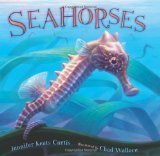

Writer’s Workshop/Six Traits of Writing/Word Choice: Read aloud Seahorses and ask students what they notice about the language. Compare this book to an encyclopedia article about seahorses. What do students notice about word choice and voice in both? Which do they prefer? Have students work on developing their word choice and voice when writing informational texts.
and ask students what they notice about the language. Compare this book to an encyclopedia article about seahorses. What do students notice about word choice and voice in both? Which do they prefer? Have students work on developing their word choice and voice when writing informational texts.
©2013 by Dawn Little for Picture This! Teaching with Picture Books. All Amazon links are affiliate links and may result in my receiving a small commission. This is at no additional cost to you.
Filed under: nonfiction, Seahorses by Jennifer Keats Curtis, six traits of writing, teaching with picture books, word choice, writers workshop Tagged: Seahorses by Jennifer Keats Curtis, six traits of writing, word choice, writers workshop


